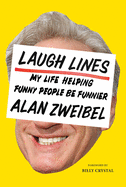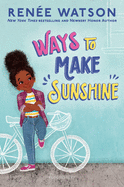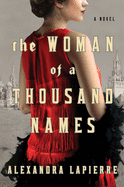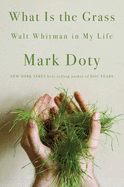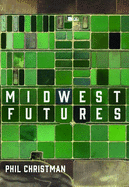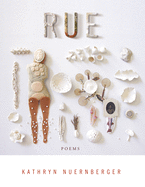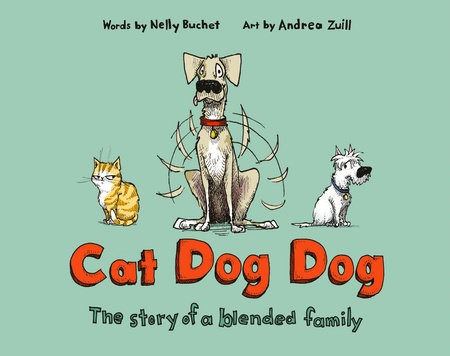Tuesday, April 28, 2020
The term neurodiversity was coined by Australian social scientist Judy Singer and refers to the range or diversity of ways humans think, learn and relate to others.
Neurodiversity incorporates diagnostic labels such as autism, ADHD, dyslexia and dyspraxia but it represents a paradigm shift in how these disabilities are viewed, especially in the workplace. Whereas in the past there was generally a greater focus on the negative attributes of neurocognitive differences, now there is emphasis on the special strengths and talents such diversity can bring to organizations.
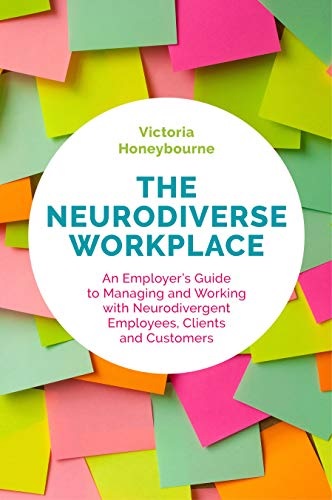 Author Victoria Honeybourne focuses not only on the social justice case for offering employment opportunities to those with different brain wiring, she also makes a compelling business case for doing so. In The Neurodiverse Workplace: An Employer’s Guide to Managing and Working with Neurodivergent Employees, Clients and Customers (Jessica Kingsley Publishers, $26.95), Honeybourne provides examples of organizations that have benefited from the different perspectives of, and innovation driven by, their neurodivergent workforce. She highlights the ways in which they contribute creative solutions to age-old business challenges. Honeybourne encourages employers to leverage the talent of neurodiverse employees by understanding their individual needs and making the necessary accommodations that will set them up for success.
Author Victoria Honeybourne focuses not only on the social justice case for offering employment opportunities to those with different brain wiring, she also makes a compelling business case for doing so. In The Neurodiverse Workplace: An Employer’s Guide to Managing and Working with Neurodivergent Employees, Clients and Customers (Jessica Kingsley Publishers, $26.95), Honeybourne provides examples of organizations that have benefited from the different perspectives of, and innovation driven by, their neurodivergent workforce. She highlights the ways in which they contribute creative solutions to age-old business challenges. Honeybourne encourages employers to leverage the talent of neurodiverse employees by understanding their individual needs and making the necessary accommodations that will set them up for success.
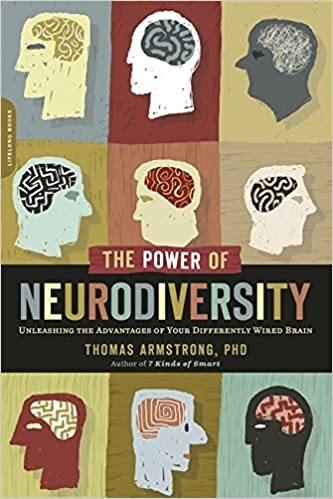 In The Power of Neurodiversity: Unleashing the Advantages of Your Differently Wired Brain (Da Capo Lifelong Books, $16.95), Thomas Armstrong recommends focusing on the specific abilities of each individual instead of regarding them simply as the sum of their disability label. He makes it clear that diversity among brains is as enriching as cultural and racial diversity, with chapters highlighting "the positive side of being autistic," "the joys of the hyperactive brain" and "the anxiety advantage."
In The Power of Neurodiversity: Unleashing the Advantages of Your Differently Wired Brain (Da Capo Lifelong Books, $16.95), Thomas Armstrong recommends focusing on the specific abilities of each individual instead of regarding them simply as the sum of their disability label. He makes it clear that diversity among brains is as enriching as cultural and racial diversity, with chapters highlighting "the positive side of being autistic," "the joys of the hyperactive brain" and "the anxiety advantage."
As Armstrong states, "there is no standard brain, just as there is no standard flower, or standard cultural or racial group." --Shahina Piyarali, writer and reviewer
The Immortals of Tehran
by Ali Araghi
Ali Araghi begins his prodigious debut novel with a literal bang: once upon a time in an apple orchard, a returning soldier urges his rifle into his son's hands, forcing the boy to shoot him. The shocking tragedy renders 10-year-old Ahmad mute, and has significant familial, societal and political repercussions, set against the backdrop of tumultuous 20th-century Iran. The family's ancient patriarch Agha attempts to enlighten Ahmad, his great-great-great-great-great-grandson, with a fantastical story involving a desert community of humans and cats who once co-existed but devolved into viciously murderous enemies, a tale revealed to be less myth than family curse. Ahmad's grandfather Khan remains aware of feline-initiated prescient warnings--especially of impending disasters--throughout his own long life.
Determined to give his only heir a future beyond their village, Khan hires a Russian polyglot to make Ahmad fluent in French in preparation for sending him to Paris to become a lawyer. That overseas migration never happens, but the extended family soon moves to Tehran, where Ahmad eventually becomes a lauded poet. He marries, fathers two daughters, and discovers a son who will never acknowledge him. His grandfather continues building rooms to keep the family together; his mother talks to the dead; his childhood best friend turns revolutionary, then prisoner. Through his seven decades, Ahmad will learn, love, endure, run, return--where his voice fails, his writing enables.
Tehran-born author and translator Araghi has clearly been immersed in the composition of words for decades. From that adroit fluency emerges The Immortals of Tehran, an impeccably realized literary gift for discerning readers. --Terry Hong, Smithsonian BookDragon
Discover: This superb debut follows an extended Iranian family through feline curse, daily survival, unintended betrayals and the transformative power of language.
Simon the Fiddler
by Paulette Jiles
As the Civil War nears its end, fiddler Simon Boudlin is conscripted into the Confederate Army, weeks before its defeat. While providing music at an officers' dinner, Simon meets Doris Dillon and falls instantly in love with the young Irish woman indentured as a governess. Paulette Jiles's novel Simon the Fiddler traces the musician's winding journey around postwar Texas and his efforts to earn both his fortune and Miss Dillon's heart.
Jiles (News of the World) follows Simon and his fellow musicians through scrappy garrison towns, down to the Gulf Coast and eventually to San Antonio, where Doris lives. The narrative paints a layered portrait of Texas in the 1860s: a rough-edged, untamed land full of ex-soldiers, Southern landowners, Tejanos with deep roots in the land and immigrants from many countries. The gruff but sincere friendships among Simon and his colleagues are one of the book's great strengths; another lies in Jiles's spare but lyrical writing, which brings the natural beauty of the state to life. Beyond grimy saloons and barroom brawls, Simon finds the Nueces River "like silk and trembling with star reflections," and the city of San Antonio "tucked into the knees of the hills, a layer of mauve woodsmoke sliding overhead." Though he struggles against poverty, hardship, disease and capricious military law, Simon is a determined dreamer who loves his music above all. Readers who relish a quixotic hero's quest or stories set on the frontier will find much to enjoy in his adventures. --Katie Noah Gibson, blogger at Cakes, Tea and Dreams
Discover: An adventurous novel of a quixotic fiddler traveling around post-Civil War Texas.
The Woman of a Thousand Names
by Alexandra Lapierre, transl. by Jeffrey Zuckerman
First published in France in 2016, The Woman of a Thousand Names by Alexandra Lapierre makes its American arrival in this translation by Jeffrey Zuckerman. Lapierre traveled to Russia, Estonia, France, England, Italy and the United States over the course of three years, gathering letters, reports and accounts of the life of Maria Ignatievna Zakrevskaya-Benckendorff-Budberg--Moura to her friends. Though fictionalizing the biography of Baroness Budberg, Lapierre (Artemisia) nevertheless assures "readers can presume that all the protagonists, all the places, all the dates, all the words, and all Moura's acts of which I am aware have been rendered with as much accuracy as I can provide within this novel."
The Woman of a Thousand Names reads like classic Russian literature; perfectly apropos, for that is the way Moura lived her life. "She embodied the novelistic form so thoroughly that she came to belong wholly to legend, myth, and fantasy," writes Lapierre. "Facts and objective reality barely counted for her. She never owed anything to Truth. Except to her own truth." Lapierre holds nothing back in describing Baroness Budberg's life, with exacting detail painting the fluctuating state of the world (beginning with the Bolshevik Revolution and continuing on through the World Wars); the parade of lovers, friends, family, husbands and children who all knew a different side of her; and the near-constant changes in settings during Moura's tumultuous existence. Did anyone truly know who Moura was? Did she know herself? Lapierre leaves it up to readers to decide, lyrically presenting a life without judgment: "She was the personification of loyalty. She was the personification of deceit.... She was a survivor." --BrocheAroe Fabian, owner, River Dog Book Co.
Discover: This biography masquerading as a Russian novel explores the complicated loves, losses and unfettered life of a 20th-century marvel.
Science Fiction & Fantasy
The Book of Koli
by M.R. Carey
With The Book of Koli, M.R. Carey (Fellside) launches an exciting post-apocalyptic coming-of-age trilogy. It is the distant future, and nature has become hostile to the point where even trees attack those who venture into the forest. Small human settlements remain within walled communities. The Ramparts who can "wake" the small amount of surviving technology make up the ruling class of teenage Koli's village. When Koli learns a secret that may allow him to master the tech and shake the Ramparts' control, he begins a journey that will take him far beyond the relative safety of his village.
Koli looks back on his story from a future distant enough that he expects his audience to be unfamiliar with the society of his youth, so he makes this strange world in which he lives accessible to readers. At the stage of his life when the action takes place, Koli is not an especially mature teenager, and the rash decisions he makes in pursuit of a changed life are both believable and extremely ill-considered, but his first-person narration makes it clear that his heart is good, and the deep bonds that he forms with his companions will win readers' hearts. He will evidently live long enough to tell his tale, but watching him grow and learn is a pleasure. One hopes he will not only survive but thrive. Readers will finish The Book of Koli eager to read the next installment. --Kristen Allen-Vogel, information services librarian at Dayton Metro Library
Discover: A teenager challenges authority and must face a hostile, post-apocalyptic wilderness in this first book of a thrilling trilogy.
Romance
The Happy Ever After Playlist
by Abby Jimenez
Abby Jimenez, author of The Friend Zone, has created an irresistible, heart-wrenching romance in The Happy Ever After Playlist. Artist Sloan Monroe is still living in a fog of grief two years after the death of her fiancé, Brandon. As Sloan drives down a Los Angeles street, a dog leaps into her car through its broken sunroof. Shocked to find herself with a lap full of dog, she finds herself suddenly, fully awake for the first time in years.
It turns out the dog's owner is a sexy musician named Jason who's currently touring in Australia. Sloan agrees to keep the dog until he gets back, since Jason's original dogsitter was clearly unreliable, and finds herself texting him at all hours of the day and night.
When Jason arrives back in L.A., Sloan can no longer deny that she's attracted to him. But it makes her feel guilty, as though she's leaving Brandon behind. Things are further complicated by the fact that Jason's career is on the rise, and he's about to set out on a long tour. Is Sloan's heart going to be broken just when she feels that it's finally started functioning again?
Sweet and funny, yet with vulnerable depths, The Happy Ever After Playlist is a delightful romance. Sloan's struggles with moving on after Brandon's death make for compelling reading--and create a surprisingly plausible story, in spite of the rock star accoutrements. Fans of contemporary romance are sure to love Abby Jimenez's second novel. --Jessica Howard, bookseller at Bookmans, Tucson, Ariz.
Discover: In this poignant romance, a woman finds herself falling for a kindhearted rock star, two years after the death of her fiancé.
Biography & Memoir
Laugh Lines: Forty Years Trying to Make Funny People Be Funnier
by Alan Zweibel
Like Steve Martin's Born Standing Up, Alan Zweibel's jaunty and laugh-out-loud funny Laugh Lines serves as both a compelling memoir and an invaluable primer to anyone hoping to succeed writing comedy. Before he became an Emmy Award-winning writer (Saturday Night Live; It's Garry Shandling's Show) and novelist (The Other Shulman won the Thurber Prize for American Humor), Zweibel was a college graduate living with his parents and selling jokes to Catskill comedians for $7 apiece. In 1975, Lorne Michaels hired him as one of the original writers for Saturday Night Live.
At SNL, he enjoyed partnering with Gilda Radner ("Our chemistry was magical"); their friendship lasted until her early death in 1989. The TV series brought him acclaim, awards and long-lasting friendships with many top comedians of that time. After five seasons, he left the show and found even greater success co-creating Garry Shandling's innovative sitcom. There were a few career missteps, including a 1991 sitcom starring Ryan O'Neal and Farrah Fawcett ("a romantic comedy for a couple who are neither romantic nor comedic," he remembers) and the big-budget film adaptation of his novel North (film critic Roger Ebert famously wrote, "I hated this movie. Hated, hated, hated, hated, hated this movie"). He also co-authored Billy Crystal's one-man Broadway show, 700 Summers, which won the 2005 Tony Award for Special Theatrical Event.
Laugh Lines is a delightful and moving memoir, filled with sweet and sour star-studded behind-the-scenes tales of dealing with egos and creating or polishing material to make other comedians even funnier. --Kevin Howell, independent reviewer and marketing consultant
Discover: This laugh-out-loud memoir of a career writing material for other comedians is also an encouraging and indispensable guide for budding comedy writers.
What Is the Grass: Walt Whitman in My Life
by Mark Doty
It was part of Walt Whitman's extraordinary innovation with Leaves of Grass to close time and space, to bring his observations and a sense of intimacy to each reader who finds him. It feels perfectly natural that acclaimed poet and memoirist Mark Doty (Dog Years; Still Life with Oysters and Lemon; Deep Lane) chooses to receive, interpret and muse upon these transmissions with What Is the Grass: Walt Whitman in My Life.
Doty, like Whitman, is gifted with words, a lover of beauty and of men, a New Yorker. He feels haunted by the elder poet, sees and smells him in the museum of Whitman's home, again encounters his ghost "above the shoulders of a bedmate on a winter afternoon early in the twenty-first century, in an apartment tower in Hell's Kitchen." What Is the Grass is a close reading of Whitman's great work, but also of American poetry, same-sex love, the exuberance of the physical body, myriad cultural shifts and Doty's own life.
As is his habit, Doty's mind on the page wanders widely. Readers should be prepared to dig out a copy of Leaves of Grass (or find one: "there is a copy of the Leaves in every used bookstore, everywhere in the nation, count on it") upon reading this book, which makes an indispensable companion and guide. Arriving finally at "the poet's greatest glory, and the exegete's inescapable defeat," in the end, Doty reminds us that Whitman's "words accomplish what words cannot," and exits quietly. --Julia Kastner, librarian and blogger at pagesofjulia
Discover: This companion to Leaves of Grass is literary criticism and explication, memoir and meditation, and the kind of fine, evocative, thoughtful prose that Mark Doty does best.
History
This Is Chance!: The Shaking of an All-American City, a Voice that Held It Together
by Jon Mooallem
Every now and then, a story comes along that introduces a character from history who never should've been forgotten in the first place. Genie Chance--a radio reporter from Anchorage, Alaska--is one such person. When a devastating earthquake struck the city in 1964, Genie became a voice for all of Anchorage, working nearly three days straight to broadcast alerts, put out calls for resources and manpower, and read aloud hundreds of individual messages in hopes of connecting loved ones otherwise unable to communicate.
As captured in Jon Mooallem's This Is Chance!, the radio reporter's heroics for local station KENI was but one of countless stories of regular people who took the burden of ensuring Anchorage's future on their own shoulders. Far from being a straightforward recounting of events, Mooallem's account latches onto a production of Thornton Wilder's classic piece of meta-theater, Our Town, as a framework for the story. A production of the play was scheduled to take place the night of the quake, but Mooallem also employs characteristics of the show's Stage Manager in sharing the story of Chance and the '64 Anchorage quake. Beyond this intriguing element, Mooallem's knack for description is also one of the book's biggest strengths. "All over Anchorage, so many rectangles and squares had become shapes with no names," he writes of the earthquake's structural carnage. As Mooallem himself begins to enter the narrative late in the story (referred to in the third person), he reveals the fascinating ways in which disaster can intangibly connect people as a core focus of this engaging, enlightening read. --Zack Ruskin, freelance reviewer
Discover: The winning story of how Anchorage, Alaska, survived a devastating 1964 earthquake thanks, in part, to the effort of intrepid radio reporter Genie Chance.
Social Science
Midwest Futures
by Phil Christman
The heartland, flyover country, the breadbasket of America, the bring-a-casserole-to-the-potluck capital of the world: whatever you call it, Paul Christman's searching, searing essay collection Midwest Futures surveys the past, present and potential of the U.S.'s ill-defined midsection. With wit and an activist's outrage, Christman's debut centers on the question of how the Midwest became what it is, both as a gridded landscape ruled by grain elevators and agribusiness, but also as a persistent (and stubbornly vague!) idea.
Christman, who teaches at Michigan State University, offers an appealing, skeptical guide, busting myths and relishing ironies, such as the one about how a region known for its people's stoic humility also has positioned itself, over the last century, as the purest expression of the very idea of American-ness. In its 36 short essays--each of uniform length and arranged, inside larger chapters, like plats of property within surveyors' rows of land--Midwest Futures offers a clear-eyed look at the region's settlement, development, culture, boom times and downturn. Christman argues that, since it was first divvied up by Congress into ownable parcels in the 1780s, the Midwest has been shaped and ruled not by the hard work of homesteading families but by corporations, large land owners and the brutal logic of capitalism. The futures of the title refers not only to what might be next but also to how the land and its people (including the Native Americans who were there first) have come second to speculative economics. --Alan Scherstuhl, freelance writer and editor
Discover: This funny, fierce study of the Midwest's past, present and future never comes close to "Minnesota nice."
Poetry
Rue: Poems
by Kathryn Nuernberger
Enlightening with its gut-wrenching wisdom, Rue by Kathryn Nuernberger (The End of Pink) unapologetically dismantles the patriarchy and the bane of societal expectation through an ireful speaker's contemplative free verse.
The speaker in Nuernberger's third poetry collection finds her behavior incongruous with her imagined self. In professional settings, she uses "a lot of smiley faces and exclamation points... to iron [her]self disarming." She wants a divorce, but convinces herself that's crazy. Sexually assaulted by her male OB/GYN, she grapples with what she did wrong; similarly, she plays "nice" rather than being "mean" and reporting a stranger's unwanted touches. To cope, she retreats into biographies of female scientists (Maria Sibylla Merian, Anna Atkins) and artists (Diane Arbus, Lee Bontecou) whose work she admires--as well as plants that, like her, perform opposite actions; images that seem human but conjure a sense she's not.
Between portraits of sexism and ruminations on identity, she catalogues plants once used to induce abortion. In doing so, she affirms how Mother Nature, even in beautiful forms like Queen Anne's lace and pennyroyal, wrests control away from men--"a woman flipping the patriarchy the bird." Multiple poems refer to women keeping silent as boxed rabbits, their "haunches... itching springs." Mermaids and centaurs in other poems further hint at undomesticated creatures aching to break free. Nuernberger's imagery forces readers to see what may at times be invisible--a true and furious inner being. Raising difficult questions, Nuernberger delivers a sublime meditation on womanhood and the complexity of the self. --Samantha Zaboski, freelance editor and reviewer
Discover: The speaker in this ecopoetic collection reflects on her unsatisfying marriage, profiles little-known female ecologists and disparages misogyny as she works to embody her authentic self.
Children's & Young Adult
Ways to Make Sunshine
by Renée Watson, illus. by Nina Mata
In Coretta Scott King Author Award-winner and Newbery Honoree Renée Watson's spirited debut chapter book, Ways to Make Sunshine, Ryan Hart is a recipe-writing, bicycle-racing queen whose first name actually means "king."
Ryan works hard to live up to the royal expectations of her name, but she finds herself facing difficult transitions after her dad loses his job. Adding to her stress is a new, smaller house, friendship discord and a dash of doubt about her natural hair. Luckily, Grandma eases that uncertainty by telling Ryan, "How you wear your hair is your choice and... it's not going to determine if you're beautiful or not. The only thing that will determine that is how you treat others."
Every chapter in Ways to Make Sunshine is a charming episode that details Ryan's heartfelt hijinks in her hometown of Portland, Ore. Each new adventure is broad enough to connect with diverse audiences while also containing nuanced, slice-of-life experiences seen through the eyes and felt through the actions of a bold, brilliant Black girl. Nina Mata's softly patterned illustrations animate Ryan's world, adding texture to sweet scenes with family and friends as well as some of her more mischievous moments. Watson (Some Places More than Others) deftly captures the straightforwardness of children like Ryan who care deeply about what's happening to the people they love, even if they're still learning how best to show their concern. Still, sometimes, they know exactly how to bring their distinctive shine to brighten up even the bleakest of circumstances. Ryan is a bright new star in chapter books. --Breanna J. McDaniel, author, freelance reviewer
Discover: A fresh beginning to a new chapter book series featuring a girl who can coax out sunshine from behind the darkest storm.
Cat Dog Dog: The Story of a Blended Family
by Nelly Buchet, illus. by Andrea Zuill
The main text of Cat Dog Dog: The Story of a Blended Family employs only nine different words, and that includes noises ("Grrr..."). How is it, then, that debut author Nelly Buchet leaves readers with the impression that they have just enjoyed a picture book magnum opus about the intricacies of the stepfamily?
As Cat Dog Dog begins, a man carrying moving boxes returns home to his oblivious dog ("Dog"). Meanwhile, a woman's two pets ("Dog / Cat") cohabitate agreeably, a "Hisss..." notwithstanding. When the man and his dog move in with the woman and her pets, things are amusingly strained: the woman's dog destroys the man's shoe. There's dog-on-dog tension at the food bowls. A backyard chase ("Bird") earns the pet trio some censure, complete with matching cones of shame.
Given Cat Dog Dog's minimalist text, it's tempting to conclude that Andrea Zuill (Wolf Camp) is doing the book's heavy lifting; she's responsible for charmingly fuss-free illustrations, like a cozy, droll, two-page spread showing the pets' eventual acceptance of their new living situation: together they pose in Halloween costumes, ogle a fresh-cooked turkey and look out the window at falling snow. But Buchet's bold black text itself is actually essential to the book's visual presentation: by fusing the animals' names on the page as "Dog Dog Cat," "Dog Cat Dog" and "Cat Dog Dog," the author signals their bond. Of course, having strength in numbers will come in handy when the pets must face the biggest challenge of their blended lives (hint: "Waaaah!"). --Nell Beram, freelance writer and YA author
Discover: This funny pet-centric picture book employs a bare-bones text and nimble visuals to capture what it's like suddenly to be part of a stepfamily.
| Advertisement Meet belle bear! |



